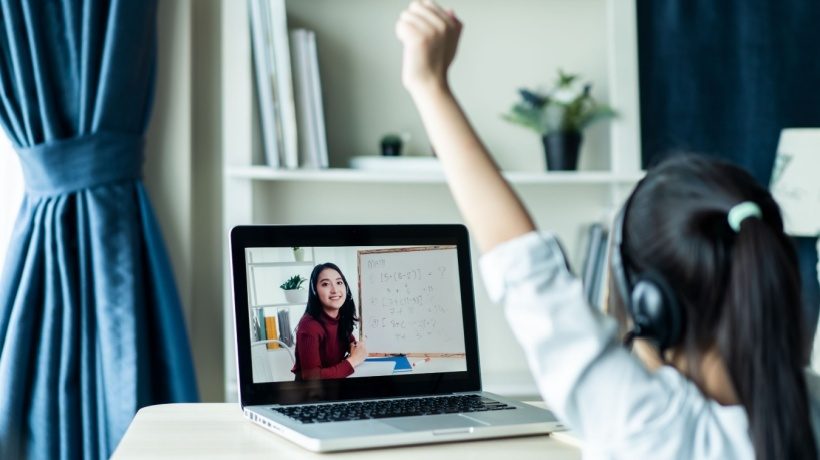Embracing The Digital Classroom Through Online Teaching Methods
These days, things are changing fast in the digital world. Technology has completely transformed the way we learn, with online education becoming a must-have. Traditional classrooms are no longer the only choice, thanks to the flexibility and accessibility of digital learning. But with these new opportunities come some challenges. That’s where effective teaching methods come in. Inspired by their use in traditional classrooms, they are proven to make a big impact on how students learn and engage. So, join us on the journey to explore the history of teaching methods and how they can be applied in online classrooms.
The Evolution Of Education: From Traditional To Online
The History Of Teaching Methods
Teaching methods have changed a lot over the years, reflecting how society, technology, and educational beliefs have changed. In ancient times, only the rich had access to education, which was mostly focused on storytelling, lectures, and hands-on learning. Then, during the Middle Ages, education became more formalized in monasteries and schools, with a focus on memorization and repetition. However, with the Renaissance came a more humanistic approach to teaching, emphasizing critical thinking and creativity. The Industrial Revolution changed that and led to mass education and standardized teaching methods. Today, teaching continues to adapt to meet the needs of modern society.
The Transition To Online Learning
The pandemic is widely responsible for the shift to online learning. It is very convenient, as we can join lessons from anywhere in the world and never miss lectures due to not being able to attend them physically. Plus, eLearning is easily accessible. It gives opportunities to people who can’t attend traditional schools due to their location, disabilities, and work or family obligations. Online learning has perks for teachers, too. With online platforms, educators have the power to create interactive learning experiences and use all kinds of tools to achieve that. They can even adapt the teaching methods they’ve used in traditional classrooms to online environments, as we’ll see below.
Different Teaching Methods For Online Learning
Think about how teaching is done in regular classrooms. It’s mostly through lectures, group discussions, hands-on activities, etc. Although these methods have been around for a while, they need to be upgraded in the digital classroom. For example, differentiated instruction. In traditional classrooms, this means customizing learning content to accommodate the students’ different needs. In the online world, it means using technology to provide personalized learning experiences. Similarly, lectures in the digital world are more interactive with multimedia elements, taking lecture-based learning to the next level. The traditional methods may have a new look online, but their purpose remains the same: to create meaningful learning experiences for online learners.
Strategies For Engaging Online Lessons
Collaboration
Each teaching method has different characteristics when applied to online learning; however, they all have some common features. First is collaboration, not only among students but also between them and their teachers. When students work together, they share their ideas and perspectives, which helps them understand the lessons better. Now, if we add teachers to the mix, we create an environment where everyone is comfortable sharing their opinions and is sure they receive help when needed. To foster this collaborative environment, be sure to utilize collaborative tools where students share their work and receive feedback, assign them to group projects, initiate discussions, and create a community in class where everyone is positively reinforced.
Engaging Content
Keeping students engaged is a tough job. But when you’re delivering lessons online, it becomes much easier due to all the tools you have in hand. Platforms allow you to add interactive elements to your lessons, like quizzes and multimedia content, to capture your students’ attention. Long videos, short clips, animations, infographics, podcasts, images, and games make courses more fun, increasing participation rates. If you want to boost engagement further, provide live lessons, like lectures or group discussions, where students can participate and exchange ideas, ask questions, and relate more to the learning content.
Effective Communication
Teaching online has its challenges, with the most important one being communication. In an online classroom, you can’t interact face-to-face with students, give immediate feedback, or read body language, so you need other methods to get your message across and keep your students engaged. So, you must always keep your tone clear, whether you’re communicating through chat, video calls, or emails. In fact, it’s better to use multiple channels to ensure that every message finds students in their preferred communication. You also want to create an open environment where students won’t hesitate to contact you or ask questions.
Adapting Assessments Online
Shifting to an online classroom changes the way teachers evaluate students. Assessments online can be tricky for a variety of reasons. First, it’s easier to monitor students during exams in a physical setting. Second, students can express their opinions immediately in a traditional classroom, and teachers are able to adapt the assessment on the spot. So what can you do? You can design open-book assessments that focus more on applying knowledge than simply memorizing it. This way, your students are less likely to cheat or collaborate with their peers. You can also do frequent and small assessments during the modules to better monitor their progress.
Conclusion
Adapting to online learning means changing your teaching methods to better suit the needs of online students. As an educator, you need to be creative and flexible in your methods to keep up with technological changes. Having an open mind and embracing change is the key to succeeding in an online classroom and delivering students with the best content possible in the best way possible.




